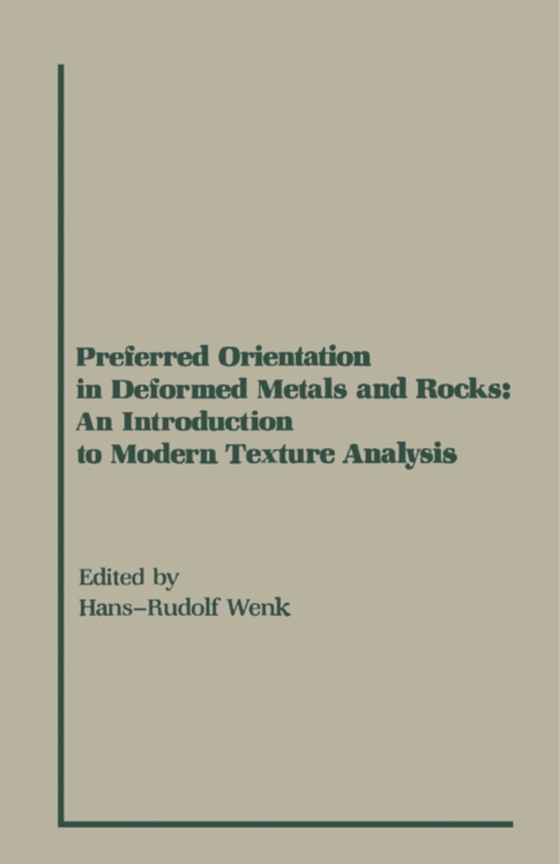
Preferred Orientation in Deformed Metal and Rocks e-bog
619,55 DKK
(inkl. moms 774,44 DKK)
This volume provides an introduction to the texture analysis of deformed materials and explores methods of determining and interpreting the preferred orientation of crystals in deformed polycrystalline aggregates.**The book reviews: 1) the techniques, procedures, and theoretical basis for the accumulation and analysis of orientation data; 2)the processes by which polycrystals deform and the mic...
E-bog
619,55 DKK
Forlag
Academic Press
Udgivet
22 oktober 2013
Længde
610 sider
Genrer
PNT
Sprog
English
Format
pdf
Beskyttelse
LCP
ISBN
9781483289342
This volume provides an introduction to the texture analysis of deformed materials and explores methods of determining and interpreting the preferred orientation of crystals in deformed polycrystalline aggregates.**The book reviews: 1) the techniques, procedures, and theoretical basis for the accumulation and analysis of orientation data; 2)the processes by which polycrystals deform and the microstructural mechanisms responsible for the development of the preferred orientation; 3) the textures in specific systems and application of principles to the solution of specific problems.**With a combination of metallurgic and geologic applications, Preferred Orientation in Deformed Metals and Rocks: An Introduction to Modern Texture Analysis will be an important source book for students and researchers in materials science, solid state physics, structural geology, and geophysics.**FROM THE PREFACE: Determination and interpretation of the preferred orientation of crystals in deformed polycrystalline aggregates (in this volume also referred to as texture) has been of longstanding concern to both materials scientists and geologists. A similar theoretical background--such as the dislocation theory of crystal plasticity--has been the basis of understanding flow in metals and rocks; and similar determinative techniques--including microscopy and x-ray diffraction--have been used to study textures and microstructures. Whereas many of the fundamental principles have been established early this century by scientists such as Jeffery, Sachs, Sander, Schmid, Schmidt, and Taylor, only in recent years has knowledge reached a level that provides a quantitative framework which has replaced a largely phenomenological approach. This is expressed in the sudden new emphasis on textural studies, as documented by the large number of recent publications.**This volume contains material to serve as an introduction for those who wish to enter this field as well as reviews for those who are already engaged in advanced research....**The book is divided into three parts. The first (Chapters 2*b17) deals with techniques, procedures, and theoretical bases for the accumulation and analysis of orientation data. The second (Chapters 8*b112) introduces processes by which polycrystals deform and the microstructural mechanisms responsible for the development of the preferred orientation. All those chapters emphasize basic principles and apply to metals as well as to minerals. The third part (Chapters 13*b126) illustrates textures in specific systems and the application of the principles set out in the earlier chapters to the solution of specific problems. Readers of these chapters will quickly become aware that metals have been more exhaustively studied than minerals; but they will also realize that, because of their structural symmetry, metals are in general much simpler than rocks and that the intepretation of metal textures is less involved. An extensive list of relevant references provides access to much of the original literature on textures....
 Dansk
Dansk

